The Black Death ravaged Europe and many parts of the world like few other events preceding and succeeding it. From the sheer death toll to social, economic and political upheavals would make it among the most momentous events in human history. Its impact on Europe between 1346 – 1353 wiped out almost 30 – 60 percent of the geography’s human population, marking an end of an era and beginning of another. The Black Death is the most fatal pandemic recorded in human history with a death toll between 70 to 200 million. It had a major impact on Europe in various ways including decline of trade; labor shortages; decline in the power of the Church; persecution of Jews; and increased focus on research of medical sciences. Here are the 10 major effects of Black Death.
#1 Death of close to 200 million people worldwide
The immensity of the Black Death’s impact upon the population of the Old World in general, and Europe in particular, cannot be underestimated. Though accurate numbers are hard to come by, the study of contemporary archives suggest mortality rates ranging from 1/8th to 1/3rd of the population in different regions. Medieval French author and historian Jean Froissart (1337 – 1405) may have been accurate when he says that one third of Europe’s population perished in the epidemic, this would amount to 25-30 million deaths in Europe alone, in the short span of 1346 to 1353. Certain other studies peg the estimate to as high as 50 million European deaths. More than 1000 villages are noted to have been completely wiped out of existence and population of western Europe did not again reach its pre-1348 level until the beginning of the 16th century. Black Death affected many other areas in Northern Africa and Asia, having considerable impact in the Middle East and China. In 1331, when the outbreak had erupted in the Yuan Empire, it had killed over 90 percent of the Hebei Province’s population (5 million people) in 3 years. The disease may have also hastened the end of the Mongol rule in China. While comprehensive figures are hard to come by, some estimates point to the world’s population dropping by anywhere between 75 to 200 million people in the 14th century due to the disease.

#2 Trade Slump And Labour Shortage
The bubonic plague caused a severe slump in domestic and foreign trade. With so many people having succumbed to the malaise, there was shortage of labor to facilitate and maintain vast trade networks. On top of that, the demand for luxury products plummeted which were vital to sustain them. Prices of agricultural products increased and there was inflation. Spread of the plague caused people to avoid crowded areas meaning marketplaces and trade in general suffered. Some of the hardest hit areas in Europe and Asia were trading ports along the coast of the Mediterranean which were hotbeds of the infection. Many landowners faced a double threat to their way of life. Not only did the Black Death pose a direct threat to their health, but the health of their estate was also severely threatened by the death of peasants who had for centuries worked their land under the feudal system. Wages rose slowly after the epidemic and peasants began negotiating power to alter the servile bonds of feudalism. The more savvy among them were able to build up their own businesses and estates.
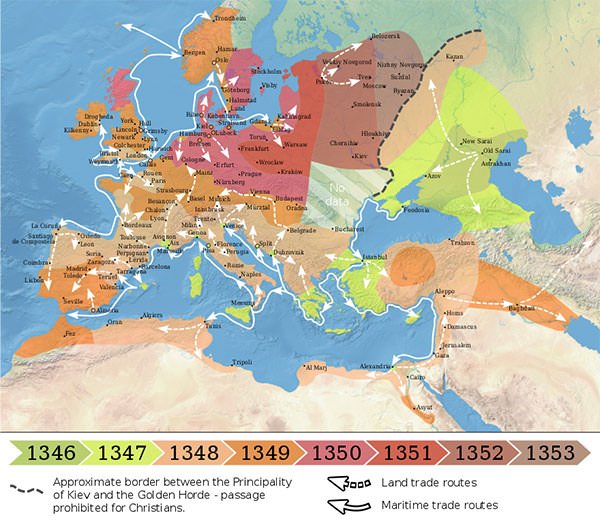
#3 Decline In The Power of the Church
The Catholic Church was the ideological backbone of Medieval Europe. Despite the constant rivalries between competing royal houses and nations, the Church remained supreme in European politics. The Church’s helplessness in the face of the Black Death, however, helped change all that. For one thing, its inability to stop the plague demonstrated the limits of its power to its Medieval audience. For another, the fact that church figures perished as well as kings and commoners was a big blow to the notion that the Church was somehow above or separate from the rest of the population. The monasteries took a severe blow in the epidemic. This was due to their close proximity with the sick who sought refuge in religion. This led to a big shortage in the clergy and need for hasty replacements; further diminishing the influence of religion.

#4 Orientation Towards Medicine And Surgery
One of the most common lines on the Black Death is that it represented a failure and backwardness of European medicine at the time. It had utterly failed to diagnose and, in many cases, contain the spread of the disease. Physicians relied on crude techniques such as bloodletting and boil-lancing along with superstitious practices such as burning aromatic herbs and bathing in rosewater or vinegar. The Black Death marked some early steps taken towards advancement and research of medical sciences. For one, it saw the first instances of removal of Medieval bans on dissecting human, to allow research into the plague. Emphasis began to be placed on anatomical investigations and the value of surgeons increased. In the future more important developments in the history of medicine and health would occur against the backdrop of plague, like the discovery of the circulation of blood and the development of public health measures.
#5 Political Deaths And Changes
Though the period of the Black Death saw a relative decrease in warfare across Europe, the period was not without political upheaval. The bubonic plague worst affected those living in clusters in poor, unhygienic conditions but the political and religious leadership faced several losses themselves. Alfonso XI, King of Castile, and Joan, the Queen of Navarre, were the European Monarchs who succumbed to the disease. Apart of them several relatives of the Royal families died including Joan of England, daughter of Edward III. The Canterbury Cathedral lost two archbishops in a row to the plague, and the papal court of Avignon lost as much as one fourth of its membership.
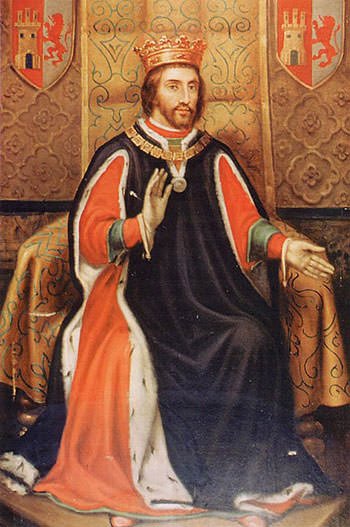
#6 The End of Pax Mongolica
Derived from the phrase Pax Romana, Pax Mongolica refers to the stabilizing effects that resulted when Mongols began controlling vast Eurasian territories after successful conquests of the 13th and 14th century. The unified administration of these areas had linked the eastern and western worlds, easing communication, trade and bringing about relative peace. Pax Mongolica had bridged isolated regions and strengthened the Silk Route trade by the early 14th Century. Black Death became one of the major reasons for ending Pax Mongolica. The disease killed several within the 4 Mongol Khantes and demographically weakened the empire, giving rise to revolts. The Mongols were soon not able to exert their rule over remote domains in their empire, disrupting the production of goods and flow of trade.
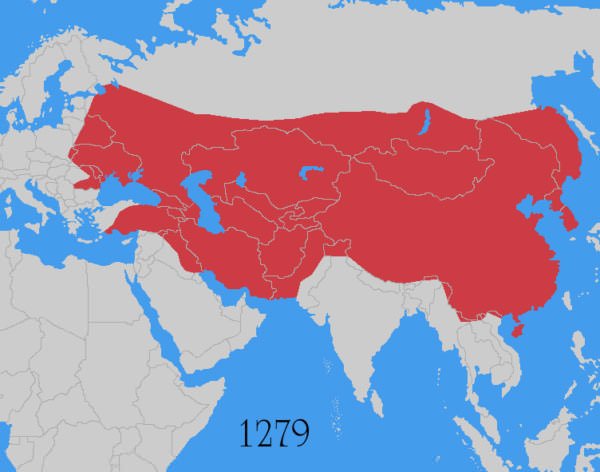
#7 End Of An Era In European Society
The European world before the Black Death had been dealt a mortal blow by the plague. Faith in the absolute and infallible power of the Catholic Church had been shaken, and the Church never again regained as strong of a stranglehold on the political fortunes and actions of Europe. The feudal class system and manorialism; which was the organizing principle of rural economies; and vested legal and other powers in a lord of the manor; were dealt a severe blow. These systems that had held the Medieval European society in place for centuries began to break down. However, from the ashes of Medieval Europe in the mid-14th century sprang forth the sparks which would, in the coming centuries, ignite the Renaissance. The Silk Road which carried the Black Death also facilitated the flow of ideas between different geographies. Ancient Greco-Roman writings were reintroduced and found audience after centuries of neglect. The destruction of the feudal order saw the rise of a merchant middle class which would grow throughout Europe for centuries to come. Many of the Renaissance’s greatest artists drew upon the budding Humanism resulting from this era; from the Italian artists’ focus on the human form to Shakespeare borrowing from Boccaccio in several of his plays.
#8 Persecution of Jews
Anti-Semitism was common during the middle ages. Backed by institutions like the Catholic Church and the political establishment, Jews were the frequent scapegoats and victims of deadly persecution and community-destroying pogroms throughout the era. As the bubonic plague spread in Europe, it initially saw an upsurge in religious fervor. Jews, friars, foreigners, beggars, pilgrims and those with skin diseases became easy targets and were blamed for the spread of the plague. More than 200 Jewish communities, large and small, were destroyed by attacks throughout Europe fueled by Anti-Semitic fervor over the Black Death, claiming the lives of countless Jews. The Strasbourg Massacre saw 2,000 Jews murdered in six days. Dresden, Mainz, Cologne, Stuttgart, Frankfurt, Brussels, Zurich and many other cities across Europe experienced similar waves of Anti-Semitic attacks and terror.
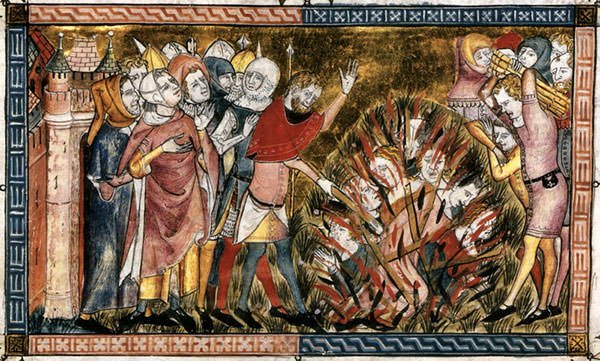
#9 Impact On European Literature
The Black Death epidemic had a profound impact on European literature, which generally turned morbid after 1350. Pessimism and theme of death dominated the writings with the most graphic depictions coming from writers such as Boccaccio and Petrarch. Petrarch lost his patron to the Black Death. He also lost Laura de Noves, who some say may have been his idealized figure Laura, to whom he wrote some of his most enduring sonnets. Perhaps more than any other author of the period, Boccaccio directly deals with the Black Death’s social and ideological impact in The Decameron. Apart from Boccaccio and Petrarch, other notable mentions include Chaucer’s Canterbury Tales and William Langland’s Piers Plowman. A new trend also began to rise, as the courtly traditions of chronicling began facing increasing competition from many ordinary writers who became involved in producing gritty realist literature, inspired by their Black Death experiences. Like in Sicily, Gabriele de’ Mussi, a notary, tells of the early spread of the plague from Crimea: “Alas! our ships enter the port, but of a thousand sailors hardly ten are spared. We reach our homes; our kindred … come from all parts to visit us. Woe to us for we cast at them the darts of death! … Going back to their homes, they in turn soon infected their whole families, who in three days succumbed, and were buried in one common grave.”
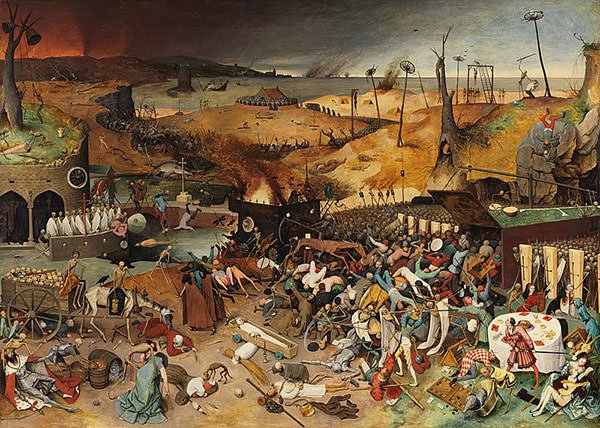
#10 Continued Impact Across Centuries
Latest research conducted in 2011 at the Max Plank Institute have pointed that all current strains of the bacteria have originated during the Black Death outbreak. Another research conducted in 2018 claims to have found the strain that links all the 3 plague pandemics over the centuries. The second pandemic, which started with Black Death, broke out in Europe every few decades from the 14thto the 17th century. Though not as fatal as the Black Death, the plagues continued to take several more lives throughout their occurrences. It is said that France alone lost almost a million people to the plague in the epidemic of 1628–31. Another plague claimed some 1.7 million victims in Italy in the 17th century while 1.25 million deaths resulted from an extreme incidence of plague in 17th-century Spain. Great Plague of London in 1665 was the last major outbreak in England while the The Plague of Marseilles (1720-21) is considered as the last major plague outbreak in Western Europe. Plague however remained a major event in Ottoman society until the second quarter of the 19th century. The third plague epidemic outbreak in 1855 mostly confined itself to Asia; killing 10 million in India alone. It was considered active till 1960. In October 2017, the deadliest outbreak of the plague in modern times hit Madagascar, killing 170 people and infecting thousands.

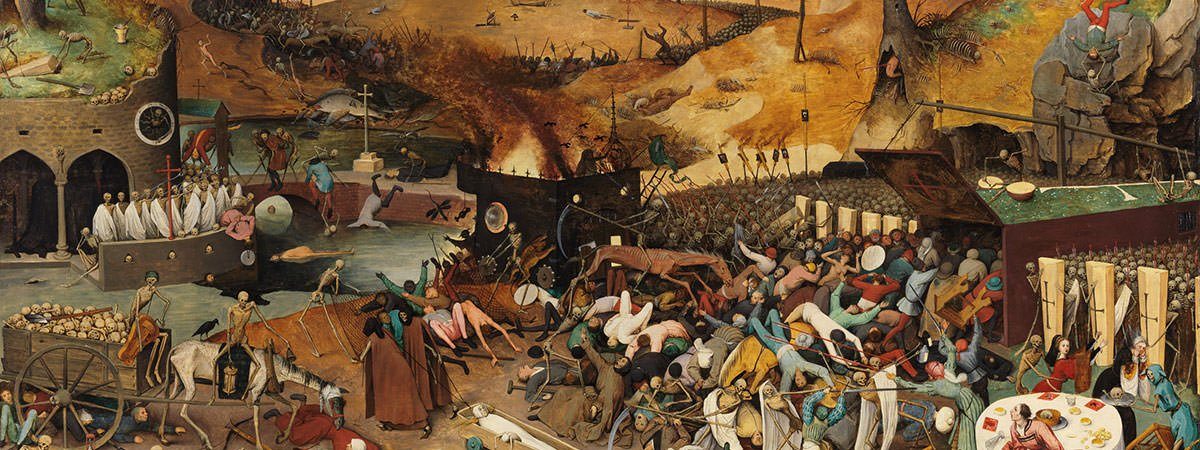
Whats the authors name
Arun Rawat
Thanks this was helpfull
You’re welcome.